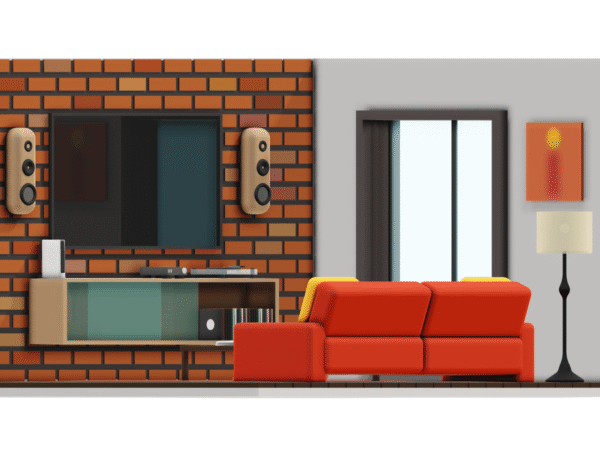
In this article, we’ll explore why contents insurance is essential for students, what it typically covers, and how to choose the right policy for your needs

Many people underestimate how much their belongings are worth. From furniture and clothing to electronics and kitchenware, the cost of replacing everything after a fire, flood or burglary can be much higher than expected.
Knowing how to value your home contents properly helps ensure that your insurance provides the right level of protection if something goes wrong.
This guide explains how to work out the total value of your possessions, why accurate valuation is important, and how to avoid common mistakes when estimating your cover needs.
For full details on what’s protected, visit our Contents Insurance page.
When you take out contents insurance, the total value of your belongings determines the level of cover you need. If your estimate is too low, you could be underinsured. In that case, any payout after a claim may be reduced in proportion to how much your home was undervalued. If you overestimate, you may pay higher premiums than necessary.
Accurate valuation ensures you only pay for the cover you actually need. It also helps your insurer handle any future claims fairly and efficiently. The Association of British Insurers (ABI) warns that underinsurance is common, particularly as inflation and rising household costs increase the price of replacements.
Valuing everything in your home can feel like a big task, but breaking it down into smaller stages makes it manageable. The goal is to get a clear picture of how much it would cost to replace all your belongings at today’s prices.
Begin by taking a methodical walk through your home, going room by room. Make notes or take photos as you go to capture what you own, from large furniture and electronics to smaller everyday items. Be sure to include every area, including hallways, lofts, garages and outbuildings, as these are often overlooked. Keeping a separate inventory for each room is practical for insurance purposes and makes it much easier to update later as your belongings change.
Remember that most contents insurance policies are based on a “new for old” principle. This means that the amount you originally paid is less relevant than what it would cost to replace the item with a new equivalent today. Assign a replacement value to each item or group of items using current retail prices, and use online stores, catalogues or receipts as guides. For older or discontinued items, choose the nearest modern equivalent in quality and specification.
Do not forget clothing, cookware, bedding and other daily essentials. These items might seem low in value individually, but collectively they can make up a significant portion of your total. If it’s too time-consuming to price each item, estimate totals for whole categories, such as “clothing” or “kitchen items”.
Some possessions, like jewellery, musical instruments or original artwork, may need professional valuations to confirm their worth. High-value items should always be listed separately on your policy, particularly if they exceed your insurer’s single-item limit. If you own several valuable pieces or collections, specialist cover under a Non-Standard Home Insurance policy may be worth considering.
Once you have estimated each item’s value, record the details in a spreadsheet or digital inventory. Include the name or description of the item, its estimated value and where it is located. Keep a copy saved online or backed up in the cloud so you can access it if you ever need to make a claim. Some insurers and consumer organisations also provide free online calculators that can help you total everything automatically.
Even careful homeowners sometimes make errors when estimating their contents value. Avoid these common mistakes:
Your belongings and their value change over time. Aim to review your list at least once a year, or sooner if:
Setting a yearly reminder to update your valuation helps ensure your cover remains accurate and up to date.
The figure you provide for your total contents value directly affects your premium and the maximum amount your insurer will pay if you need to make a claim. Providing an accurate total means your cover reflects the real cost of replacing your possessions, without paying more than necessary.
If you are unsure about how to value a particular item or whether it should be listed separately, speak to your insurer or broker. They can explain how high-value items and limits apply to your specific policy.
Once you know the total value of your belongings, you can make sure you have the right level of protection. Understanding what is covered, and at what limits, helps avoid surprises in the event of a claim. For information on limits, optional cover and what’s included, see our main Contents Insurance guide or contact our team for a tailored quote.

In this article, we’ll explore why contents insurance is essential for students, what it typically covers, and how to choose the right policy for your needs

Learn all about "contents in the open" to protect your garden furniture & other outdoor items during summer season.

Wondering if your Christmas presents are protected? Discover how home insurance covers your festive purchases.